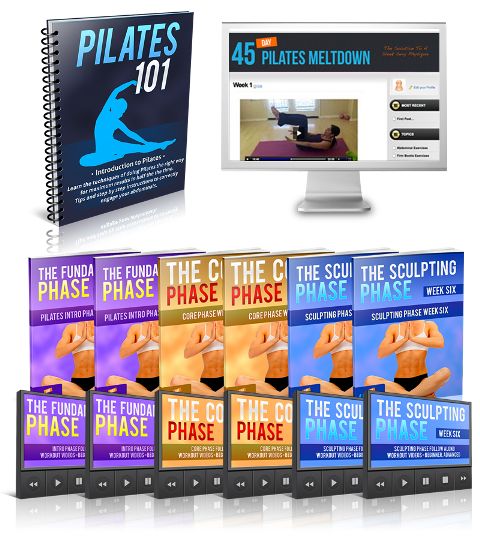Many fitness centers present a program of group classes with a mysterious name “Pilates”. What is Pilates and its principles, and how to use this system to get perfect shapes and improve your health – you will learn from this article.
So, what is called Pilates? It is a combination of physical exercises, created by German physician Joseph Pilates in the first half of the 20th century. In childhood, Joseph was a frail and sickly child. When he grew up he decided to challenge his physical condition and develop an individual program of physical exercise. Thanks to his own method, Joseph Pilates has evolved from physically undeveloped young man to a strong sportsman with an athletic figure and great health.
Inspired by his personal victory, Pilates creates a whole system of exercises, later used as rehabilitation for soldiers during the First World War, as well as in preparation for the performances of famous circus performers and artists. By the way, if you want to become slimmer and lose weight, be sure to download the program by Sylvia Favela. After only one week of classes, I could already see an amazing result.
The principles of the Pilates system
The effectiveness of the system is based on the principles that guarantee visible and lasting results. There are the following principles of Pilates:
- Smooth movements. Exercises must be carried out at a moderate pace, without spurts or excessive force.
- Breathing. During exercise, you should comply with the special breathing mode, which allows achieving of more pronounced effect. The breathing in should be done before the start of the movement and exhaling – in the process.
- Insulation and relaxation. You should perform the exercises so that you won’t create unnecessary tension in areas, which are not under development at the moment.
- Concentration. During Pilates, it is necessary to concentrate on the proper execution of exercises, without being distracted by extraneous thoughts.
- Centering. Exercises should be performed with active “girdle of strength”, i.e. with the drawn muscles of the abdomen.
- Alignment. During exercises, it is necessary to monitor the correct position of the body. Otherwise, the exercise will be less effective.
- Coordination of movements. It is important to focus on the sensations that arise in the course of the exercises. This will help to protect the body from possible injuries and achieve a more significant effect.
- Gradualness. The load shall be increased gradually, the same as the development of physical exercises.
- Regularity. In order to achieve actual results, you must exercise on a regular basis, at least 5 times a week.
It is believed that breathing is the basic principle of Pilates. Before starting to practice, first of all, you need to learn how to breathe correctly. Pilates is using a special process of breathing, known as thoracic or lateral. With this type of breathing, man, straining the abdominal region, seeks to reveal the chest to the maximum, providing not only sufficient oxygenation of the body but also the strengthening of the intercostal muscles.
While performing exercises on an exhalation, a person can gradually and carefully enter the muscles in a state of tension. Proper breathing is a skill that can be and, more importantly, needs to be learned.
The main advantages of an exercise program
The benefits of Pilates for the body are simply priceless. Classes, which consist of careful and smooth movements, are helping to stretch and strengthen muscles, achieving a coherent work of all departments of the body. Unlike other exercises, Pilates involves not only large but also smaller muscles, which often remain inactive in the standard set of physical exercises.
In Pilates such indicators as speed and intensity of exercise do not matter. The main point is the quality of performance, which guarantees an excellent result. The system is suitable for people who have completely different degrees of physical abilities. I wish you good health and a multitude of years. Practice Pilates and never get sick. Thank you for attention!





